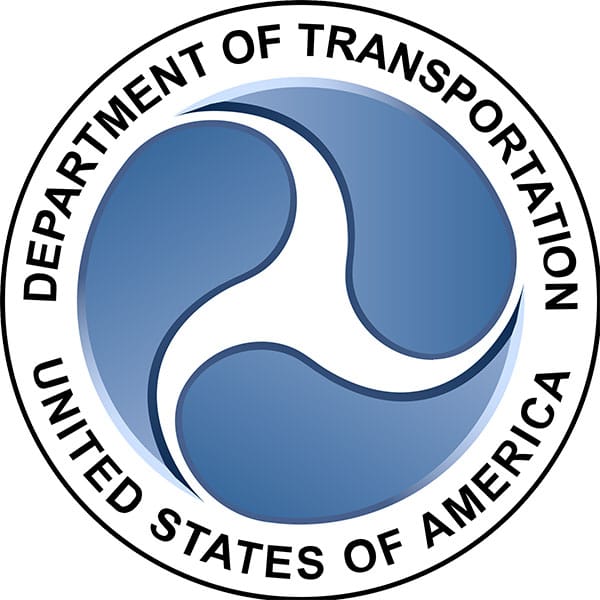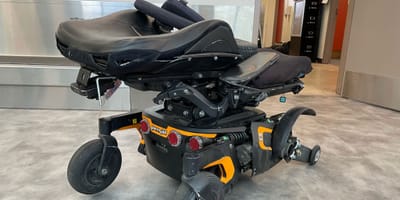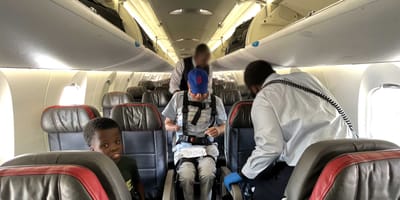
When the U.S. Department of Transportation teased yesterday’s announcement of new aviation regulations to safeguard consumers, increase competition and protect passengers with disabilities, I was excited.
It is no secret that I have been critical of the DOT for its limited enforcement of the Air Carrier Access Act. Still, I hoped the department would take this rule making opportunity to significantly improve the air travel experience for the disabled. Upon first glance at the document, though, I was both disappointed and frustrated.
A New Air Travel & Disability Regulation
Only one of the new regulations applies to travelers with disabilities. It reads:
The largest U.S. airlines will be required to report on how often they mishandle wheelchairs.
Wow. Nothing to improve the accessibility of lavatories, increase safety in emergency evacuations, enforce the right to select seats in advance, guarantee the timely return of gate-checked mobility devices or require the adequate disclosure of relevant travel information (like cargo hold dimensions). I could go on and on.
Damage to wheelchairs can be a big problem – when it happens. I’ve been the victim of wheelchair damage on numerous occasions, and one of my chairs was written off as a total loss after being dropped from an airplane. But I have what is perhaps the largest sample size of traveling with a personal power wheelchair over the past 3 years (450+ flights), and these instances are rare. In a meeting with Delta Air Lines, I learned that only 3.34 of every 100 wheelchairs they carried in 2014 were damaged, with most instances being quite minor.
Three Potential Benefits
With there being only about a 3% rate of damage to wheelchairs, I don’t believe this new reporting requirement will have much of an effect on the handling of my wheelchair. But that doesn’t mean the new rule is worthless. There are several benefits that we may realize as a result, which I have described below.
Gate-checked wheelchairs may be returned more quickly.
Airlines generate a cargo manifest for each flight, which informs personnel at the destination airport what is being transported in the belly of the aircraft. Based on the contents listed, ground crews position the machinery, equipment and manpower necessary to ensure that the job is done.
The majority of the time, though, airport ground crews receiving my flights appear surprised at the discovery of a power wheelchair in the plane’s cargo hold. When my mobility device (which weighs 300-pounds) is left off this manifest, the crews are unable to prepare for its timely return to the gate/terminal.
The DOT’s requirements for better record-keeping should result in more accurate information being passed on to baggage handlers. Let’s hope my days of sitting on an aisle chair for an hour in the jetway are over.
U.S. airlines might finally use the AmbuLift to load wheelchairs.
If you’ve traveled abroad, you might have encountered an AmbuLift. These vehicles look a lot like catering trucks, and allow wheelchairs to be taken directly from the door of the aircraft to the cargo hold. This speeds up the stowage and return of power wheelchairs, improving the experience for travelers with disabilities.
I believe this new rule could be a step towards the AmbuLift’s adoption in the United States, as they eliminate the need for baggage handlers to physically lift power wheelchairs. This would be a win-win scenario for airlines and passengers alike.
Data may increase the visibility of travelers with disabilities.
Statistics on the total number of air travelers with disabilities have been too broad, and reveal little about the actual make-up of our traveling community.
Disability is diverse, and published statistics fail to differentiate between differences in passenger needs. The requirements of a deaf or blind passenger are much different than those who use wheelchairs. And even amongst travelers who request wheelchair assistance, there is great diversity.
As a result of this new rule, monthly and annual DOT reports will soon include information on the number of passengers who travel with their own wheelchair. With this information entrenched in the reports, it will be much more difficult to ignore the disabled traveling public. It is also my hope that the change will support the DOT in bringing greater enforcement action against airlines who violate civil rights guaranteed by the ACAA.
Final Thoughts
Although this new rule was not the one I hoped to see, it may prove beneficial if the ideas I shared above are enacted. While the ACAA has done a lot to open up the world of air travel to all, there is still so much more that needs to be done.
The visibility brought to our segment of the traveling public by this new statistic will hopefully serve as the first step in a revitalization of a civil rights law that has fallen far short.
I still hope for a day when people like you and me will be more involved in the regulation of airlines and the air travel industry. But until that day comes, we’ll have to celebrate one small step at a time.
For the complete announcement, visit www.transportation.gov.















